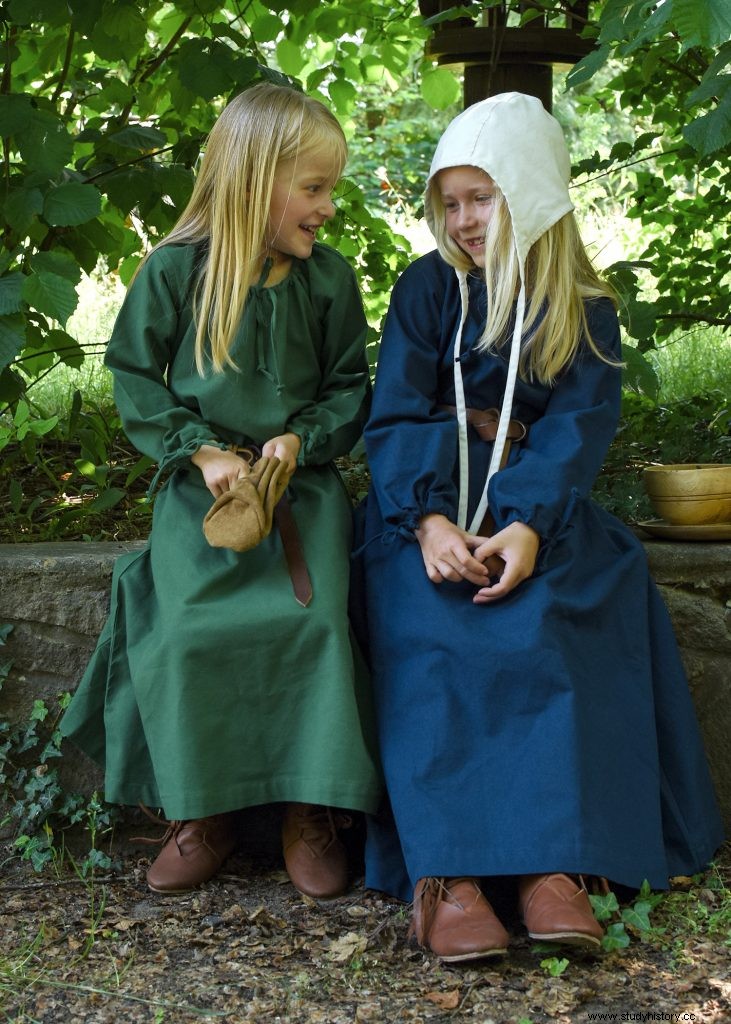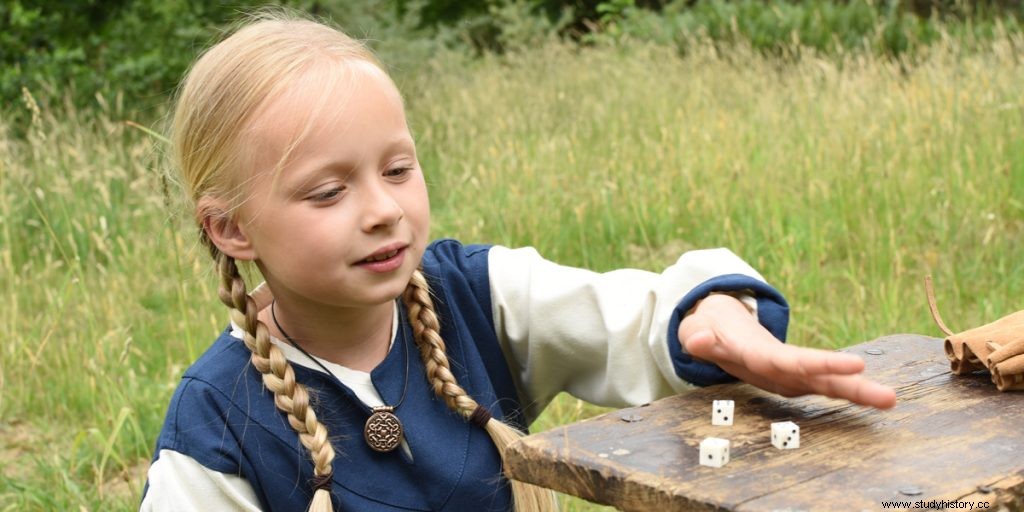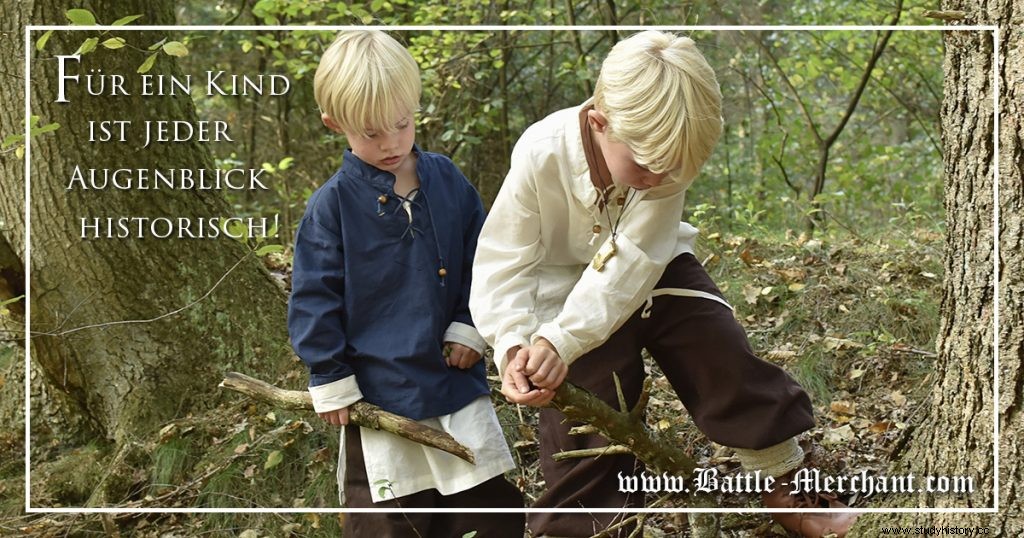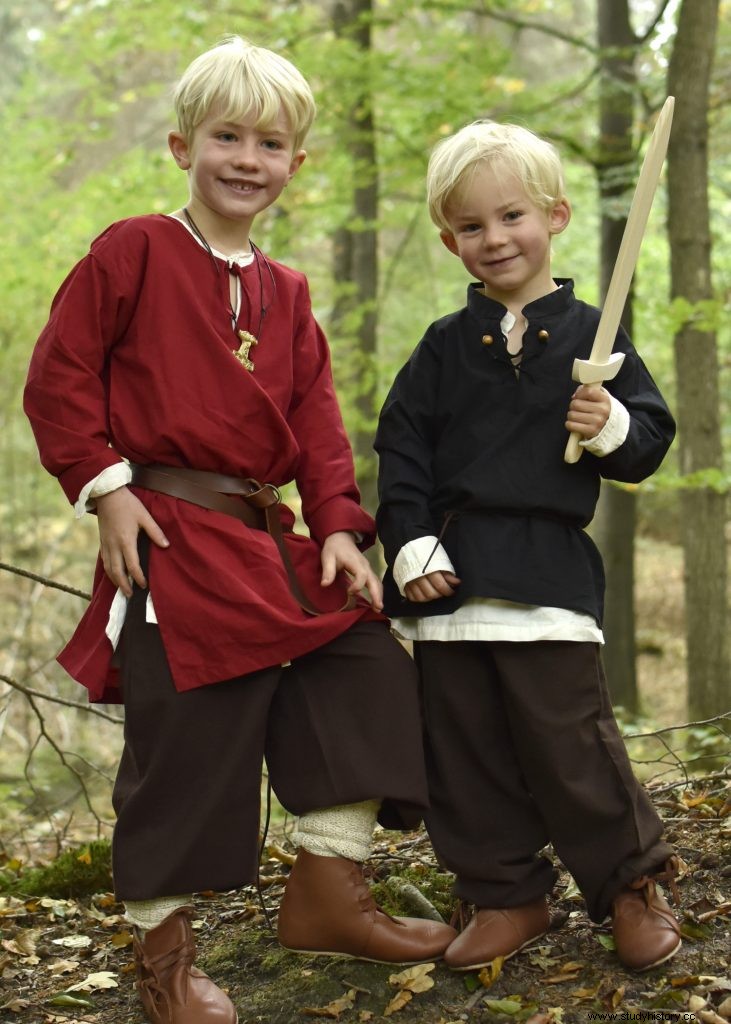The life of children in the Middle Ages cannot be described in general terms, as it was determined by many different factors. This includes origin, social position of the family, place of residence and gender. In general, the children of rich bourgeois families and aristocrats had a better life than the children of poor farmers. In addition, infant mortality was very high, and many fatal diseases were rampant during this period.
The perception of children in the Middle Ages
Children in the Middle Ages were viewed very ambivalently. On the one hand, the offspring was a positive factor in the life of the parents and a source of happiness. Medieval citizens were exhorted by the church to lead a Christian way of life, to marry, and to have many children. On the other hand, religion also viewed children negatively, since they arose from the body's carnal desires, which were supposedly initiated by the devil. In the Middle Ages, anyone who decided to lead a pure and consecrated life renounced a family and went to a monastery as a monk or nun.
The importance of children in medieval society

Childhood was considered an innocent stage of life, since children knew neither sexual pleasure nor the meaning of death. They were also alien to fraud, bigotry, hypocrisy and lies. Based on these findings, the custom arose for children to walk at the head of the pageants in religious processions. In the Middle Ages, for example, children were considered a gift from God and less than the property of their parents.
Farmers needed a lot of labor and therefore produced large numbers of children. It was extremely important for nobles and wealthy citizens to produce a male heir for political reasons. This was the only way to ensure the continued existence of the dynasty. Due to the high infant mortality rate, the offspring had to be constantly replenished, as usually less than half of the children in a family survived.
The schooling of children in the Middle Ages was also dependent on social status. For the offspring of rich people, private lessons were held at home. In the city, boys and girls attended a primary school together to learn to read and write. In the country there were often no classes at all.
Dealing with children in the Middle Ages
In contrast to today, children in the Middle Ages were breastfed for a relatively long time, on average at least two years. In this way, nutrition was ensured, and the long period of breastfeeding probably also served as a contraceptive. Women from the aristocracy very often entrusted their children to a nurse in order to be able to participate in social life again. As a result, they were able to get pregnant more quickly again, so that they could finally give birth to the male successor, if it had only been girls before.
If the parents lived as unfree farmers, the children had to work as maids and servants from a very early age. Those who did not obey were usually punished with beatings. In general, physical violence was a common means that could be used in the education of children in the Middle Ages. Since the children didn't know any different, they probably found this behavior to be normal.
A number of literary works testify to the fact that education with the rod was common practice. Thus Berthold von Regensburg proclaims in his “Sermons” from 1240:“From the time when the child speaks the first bad words, you should have a small ratchet ready that is always stuck on the ceiling or in the wall; and if he speaks a bad habit or a bad word, you shall slap him on the bare skin. But you shall not hit him on the bare head with your hand, otherwise you might make him a fool; only a little rice that fears it and is brought up well. If you don't do this, you will see bad things in them...".
Nevertheless, it was already known in the Middle Ages that a child would wither away without care, at least since the experiments of Emperor Friedrich II in the 13th century. He ordered wet nurses not to caress or speak to infants to find out what language they would then speak. But all the children died.

Children in the Middle Ages and their rights
In the society of the Middle Ages, the citizens were divided into different age groups, altogether there were seven different levels. The first stage of childhood lasted only until the third year of life. This is followed by adolescence as the second stage, which was considered complete when the child reached the age of 14. These strict ideas had a major impact on the everyday lives of many children. Child labor and extremely early professional training were the order of the day in order to contribute to the economic survival of the whole family.
From the age of six at the latest, most children in the Middle Ages had to work, whether they wanted to or not. The children from the lower social classes were particularly affected, both in the country and in the city. In addition to agriculture, children worked in mining, as servants and in handicrafts. They were often used for work where a short body size was an advantage.

Games for children in the Middle Ages
Of course, the children in the Middle Ages knew not only work, but also play. However, the social status of the parents was decisive for the possibilities in which children were allowed to live out their play instinct. Depending on the respective shift, the offspring also had completely different toys at their disposal. Standard items included spinning tops, dolls, marbles, and animal figures made of wood and clay. If the family belonged to the rich upper class, the children got painted ceramic birds and rocking horses, but also musical instruments such as the flute, tambourine and drum.
Just like today, children in the Middle Ages played a lot in the sand and earth to build houses, walls and towers. Games to promote dexterity and strength, such as standing on their heads and cartwheels, were very popular. The hopping game, referred to as heaven and hell, was probably already known in the Middle Ages. There were also catching, representation, role playing, search and throwing games with balls, coins and rings. Dice games were also very popular in the Middle Ages. The upside was that even poorer families could carve a pair of dice out of bone or wood in no time.
However, the children from the poor lower class did not have much time to play after work. That changed in the countryside in the winter months, when the days became shorter and the temperatures steadily colder. Then there was less work on the farm, so the offspring could spend more time with the family and playing. Anyone who had many siblings always had a sufficient number of playmates to choose from.

Clothes worn by medieval children
Children's clothing in the Middle Ages did not differ significantly from the clothing of adults. They were similar in cut, material and color and differed only in size. But if you compare different finds, you will find different forms of childlike clothing. Because the status of the family within society also led to a differentiation in clothing.
Children's clothing from lower social classes

The children's clothing of the lower social classes was designed very simply, mostly mothers made them themselves from flax, linen and wool. It was important to have a wide and comfortable cut that could offer sufficient freedom of movement so that unhindered work was possible. In this way, children in the Middle Ages often only grew into their oversized clothing over time.
Servants wore simple tunics and wide trousers. The garments of the maids included an undergarment, an overgarment, a bonnet or a cloth. Both boys and girls wore leather boots and sometimes an apron, depending on the profession. Contrary to popular belief, peasants did not necessarily belong to the lower class. Free peasants who owned their own land were able to attain some prosperity. Accordingly, the clothes of the children of free peasants looked different from the clothes of the children of unfree peasants.
Clothes worn by children from higher social classes
In the early Middle Ages, the clothing of social classes did not differ significantly. Differences were more apparent in ostentatious jewelry and accessories such as decorative weapons and armor. It was not until the High Middle Ages that the nobility began to prefer opulent cuts that less well-off people could not afford because the amount of textile alone would have cost too much. In addition, the clothes of the higher classes were richly decorated and - stimulated by the flourishing trade - made of precious materials. The children's clothing was in no way inferior to that of the adults.
Noble tunics, elegant skirts, tight-fitting trousers, courtly dresses and long coats were among the items of clothing worn by aristocrats and wealthy citizens alike. In addition, the upper class decorated their wardrobe with fine embroidery and borders. On the other hand, the majority of the population did not have the financial means to decorate their clothes. The wardrobe was often inherited from one child to the next and only patched together in a makeshift manner.
